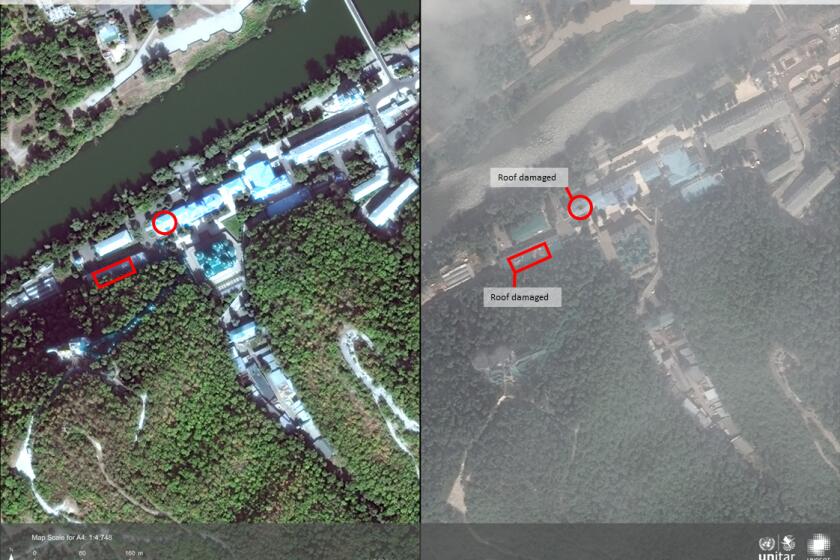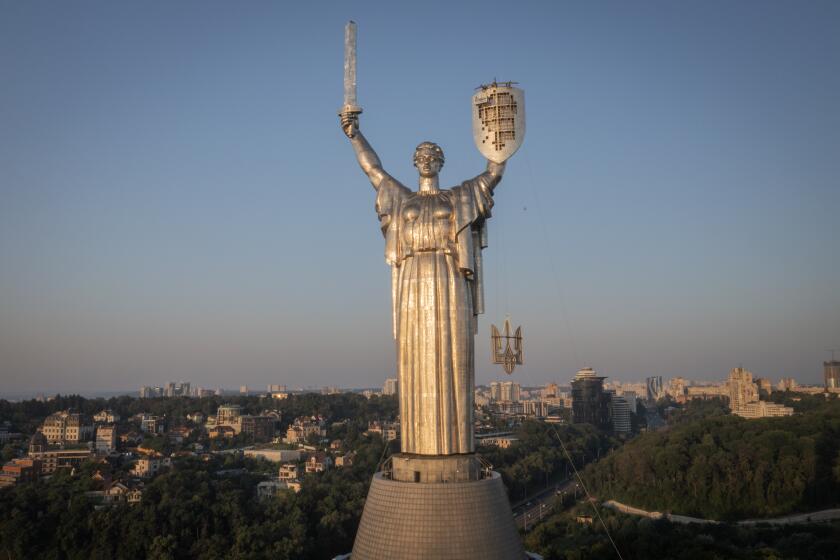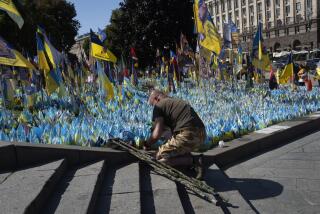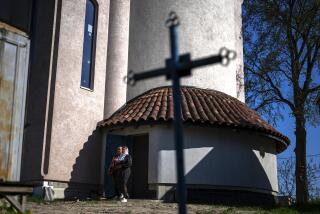Soviet hammer and sickle is out, Ukrainian trident is in on towering Kyiv monument
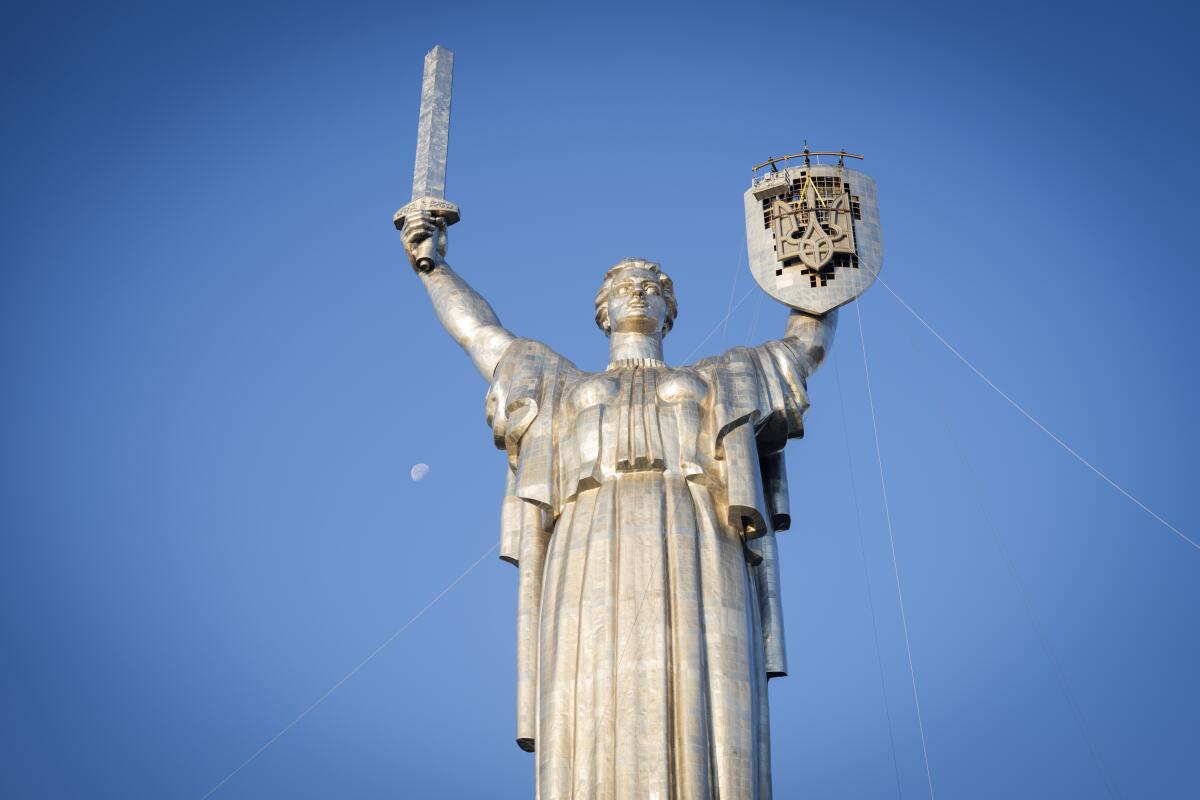
KYIV, Ukraine — The towering Mother Ukraine statue in Kyiv — one of the nation’s most recognizable landmarks — lost its hammer and sickle symbol Sunday as officials replaced the Soviet-era emblem with the country’s own trident coat of arms.
The move is part of a wider shift to reclaim Ukraine’s cultural identity from the Communist past amid Russia’s ongoing invasion.
Erected in 1981 as part of a larger complex housing the national World War II museum, the 200-foot-tall Mother Ukraine monument stands on the right bank of the Dnipro River in Kyiv, facing east toward Moscow.
Created in the image of a fearless female warrior, the statue holds a sword and a shield.
But now, instead of the hammer and sickle emblem, the shield features the Ukrainian tryzub, the trident that was adopted as the coat of arms of independent Ukraine on Feb. 19, 1992.
Workers began removing the old emblem in late July, but poor weather and ongoing air raids delayed the work. The completed sculpture will be officially unveiled Aug. 24 — Ukraine’s Independence Day.
The U.N.’s cultural and satellite agencies are tracking the impact of Russia’s invasion of Ukraine on that country’s historic and cultural sites.
The revamp also coincides with a new name for the statue, which was previously known as the “Motherland monument” when Ukraine was part of the Soviet Union.
The change is just one part of a long effort in Ukraine to erase the vestiges of Soviet and Russian influence from its public spaces, often by removing monuments and renaming streets to honor Ukrainian artists, poets and soldiers instead of Russian cultural figures.
Most Soviet and Communist Party symbols were outlawed in Ukraine in 2015, but this did not include World War II monuments such as the Mother Ukraine statue.
Some 85% of Ukrainians backed the removal of the hammer and sickle from the landmark, according to data from the country’s Culture Ministry released last year.
Russia unleashed a missile and drone barrage on western Ukraine. Shelling overnight killed at least six people, officials say.
For many in Ukraine, the Soviet past is synonymous with Russian imperialism, the oppression of the Ukrainian language and the Holodomor, a man-made famine under Josef Stalin that killed millions of Ukrainians and has been recognized as an act of genocide by both the European Parliament and the United States.
The movement away from Soviet symbols has accelerated since Russia’s full-scale invasion of Ukraine on Feb. 24, 2022, with assertions of national identity becoming an important show of unity as the country struggles under the horror of war.
In a statement about the emblem’s removal, the website of Ukraine’s national World War II museum described the Soviet coat of arms as a symbol of a totalitarian regime that “destroyed millions of people.”
“Together with the coat of arms, we’ve disposed the markers of our belonging to the ‘post-Soviet space.’ We are not ‘post-’, but sovereign, independent and free Ukraine.”
More to Read
Sign up for Essential California
The most important California stories and recommendations in your inbox every morning.
You may occasionally receive promotional content from the Los Angeles Times.
